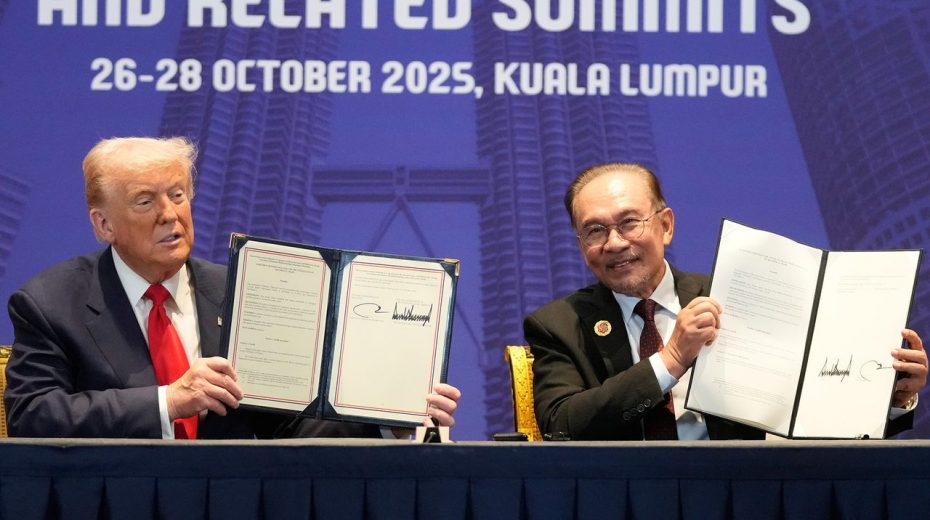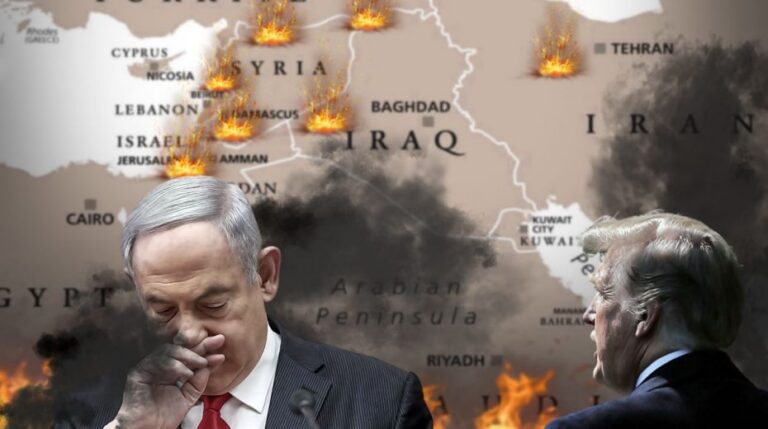
American authorities assert they have reached an understanding with China to prolong the temporary halt on the implementation of substantial additional tariffs on Chinese imports, which would have nearly cut off trade between the world’s two largest economies.
This pause, originally agreed upon following US President Trump’s April declaration of a significant “reciprocal tariff” increase that triggered a sharp decline on Wall Street, is set to expire on November 9.
During recent discussions with Southeast Asian leaders in Kuala Lumpur, Malaysia, US representatives indicated the truce is likely to be extended for a period longer than 90 days.
The trade conflict was expected to escalate after China announced earlier this month new global export restrictions on rare earths and critical minerals, affecting items ranging from computer chips to heat-resistant magnets vital for automobiles and jet engines.
Although Beijing stated that these restrictions would target only military applications and not commercial uses, and that they mirrored US limitations on its computer chip usage, the announcement provoked a vehement reaction from the White House.
Trump swiftly warned that if China moved forward with the controls, the US would retaliate with an additional 100 percent tariff on all Chinese products.
In an ABC News interview, Treasury Secretary Scott Bessent expressed his expectation that China would postpone the critical minerals restrictions for a year and reconsider the policy.
China’s chief trade negotiator, Li Chenggang, informed reporters in Beijing that a “preliminary consensus” had been reached concerning export controls, fentanyl, and an extension of the trade truce.
US officials anticipate the truce extension to surpass 90 days to provide certainty and stability for both the global economy and US-China relations. Bessent told CBS that the threat of a 100 percent additional tariff on Chinese imports was “effectively off the table” and described the discussions as “very good.”
The Chinese state news agency Xinhua reported a “basic consensus” had been achieved to address the “respective concerns” of both parties.
According to US officials cited by the Financial Times (FT), China’s change in stance on export controls was influenced by US threats and warnings from the European Union concerning the growing risk of rare earths supply disruptions.
“When you have the EU saying we’re drawing up countermeasures against China… that is not something they usually do,” one anonymous official told the FT.
If a truce has indeed been secured, the US motivations are apparent: it seeks to bolster its stockpile of critical mineral resources crucial for sectors like military manufacturing to better endure potential Chinese retaliation should the trade war intensify.
There is also considerable speculation from the American side of a “framework agreement” soon to be finalized at the upcoming meeting between Trump and Chinese President Xi Jinping in South Korea. However, China’s responses have been more restrained as it continues to press the US for concessions, especially regarding semiconductor restrictions.
While headlines emphasize the likely extension of the truce, reassessment of export controls, and a potential framework agreement, the US is simultaneously activating other strategies to prolong its tariff conflict with China.
The US Trade Representative’s (USTR) office announced it will investigate “whether China has fully implemented its commitments” under the trade deal signed during Trump’s first term and decide “what action, if any, should be taken in response.”
A representative of the Chinese embassy in Washington rejected the US’s “false accusations.”
This review of past agreements relates directly to current circumstances. It forms part of the Trump administration’s preparations should the Supreme Court uphold rulings from lower courts stating that Trump exceeded his authority by imposing “reciprocal tariffs” under a “national emergency” declaration via the International Emergency Powers Act of 1977.
The USTR’s probe aims to establish legal grounds for maintaining tariffs on China under different legislative authority where presidential powers are more explicitly defined.
Aside from negotiations with China, discussions in Kuala Lumpur yielded announcements of trade agreements with Malaysia and Cambodia, as well as continued talks with Thailand and Vietnam.
Using terms like “deal” or “agreement” is misleading, as the joint statement from the US and Malaysia clarifies. The arrangement is largely one-sided, where the US imposes terms backed by threats of heavy tariffs.
The sole “concession” from the US is maintaining its tariff on Malaysian products at 19 percent.
Key provisions require Malaysia to “provide significant preferential treatment for US industrial goods exports” and agricultural products.
These commitments include annual purchases of up to $3.4 billion of US liquefied natural gas; $42.6 million in US coal sales; telecommunications products and services worth $119 million; the acquisition of 30 Boeing planes with options for 30 more; and purchases of US semiconductors, aerospace parts, and data center equipment valued at an estimated $150 billion.
In exchange, Malaysia gains little aside from US assurances that it will avoid crippling tariffs and that approximately 12 percent of its exports to the US will be exempt from the standard 19 percent tariff.
Malaysia has also consented to “accepting US manufactured vehicles” built to American safety and emission standards and to “address and prevent non-tariff barriers to US food and agricultural products within Malaysian markets.”
The statement further commits Malaysia to “refrain from imposing digital services taxes that discriminate against US companies” or imposing charges on US social media firms for contributions to a domestic Malaysian fund, among other provisions.
A central aim for the Trump administration is to secure access to critical minerals and diminish China’s dominance, as China mines 70 percent and processes nearly 90 percent of these materials.
Therefore, critical minerals prominently feature in the joint statement, with Malaysia pledging “to refrain from banning or imposing quotas on exports to the United States of critical minerals or rare earth elements.”
The Straits Times notes that Malaysia holds over 16 million tonnes of rare earth deposits and meets 13 percent of the global critical minerals demand. However, as with many other sources, all rare earths extracted there are sent to China for processing.
Under its agreement with the US, Malaysia has agreed to accelerate the development of its rare earth and critical mineral sector in cooperation with American companies, including through extended operating licenses, highlighting the strategic importance of these facilities in the US economic competition with China.
The exploitative character of US trade policy is perhaps best shown by Malaysia’s commitment to invest $70 billion into the US economy over the next decade.
While smaller than the $550 billion investment commitments obtained from Japan, this demand exemplifies how US imperialism is resorting to aggressive tactics in a bid to combat its ongoing structural crisis.
Original article: World Socialist Web Site




